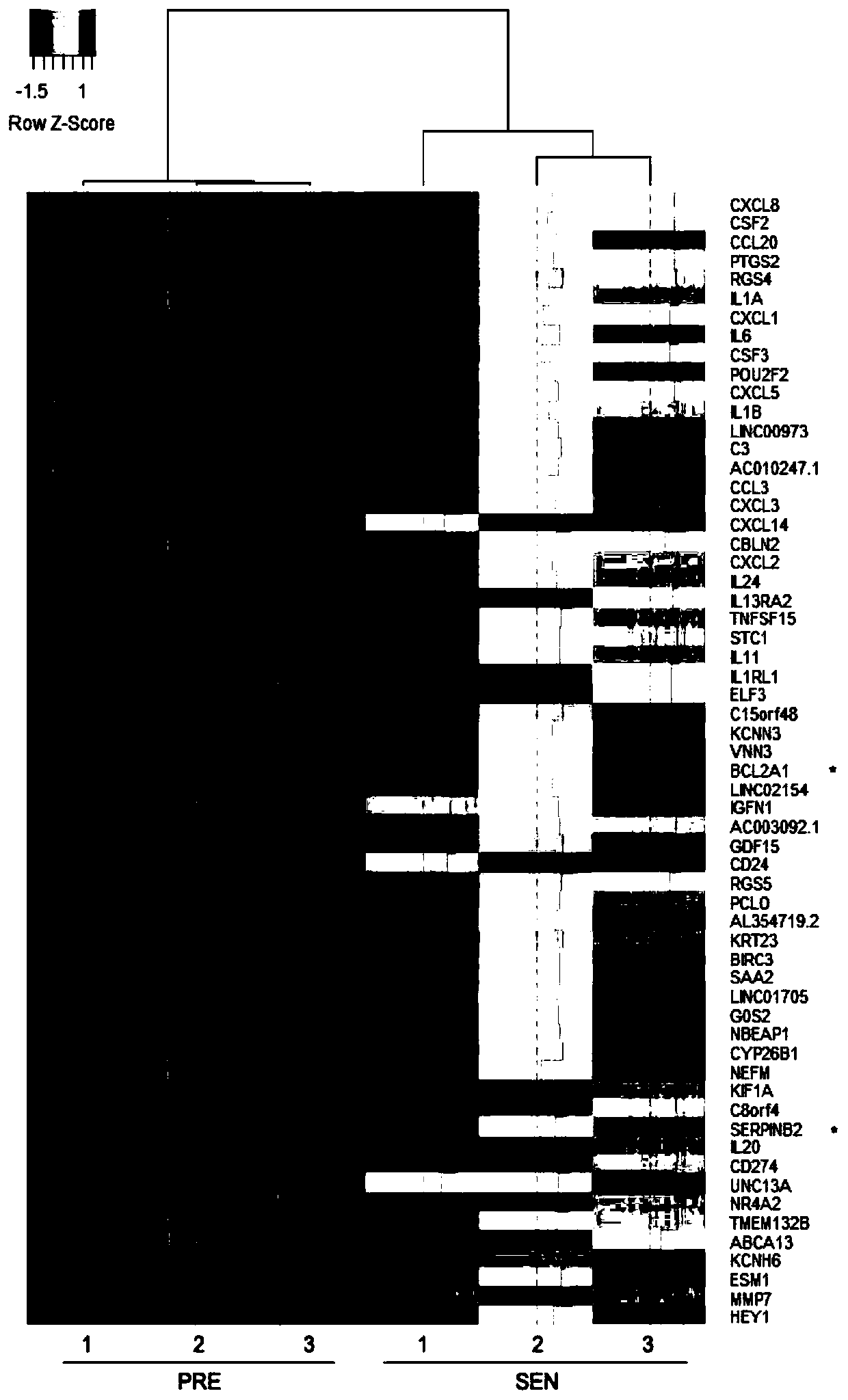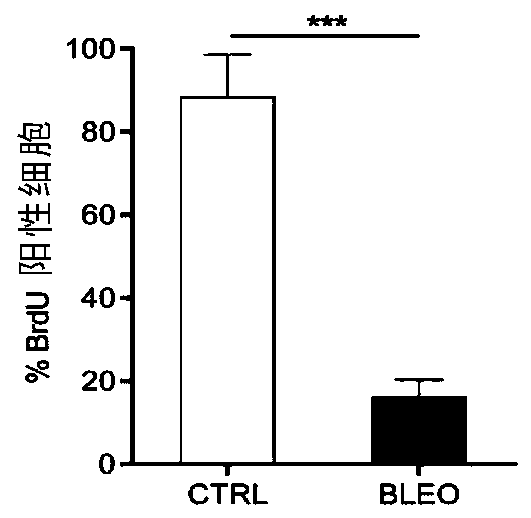Anti-aging medicine D/A targeting at aging cells in tissue microenvironment and application of anti-aging medicine D/A
A technology of senescent cells and drugs, applied in the field of biomedicine, can solve problems such as limitations of applicability and practical effects, and inability to remove
- Summary
- Abstract
- Description
- Claims
- Application Information
AI Technical Summary
Problems solved by technology
Method used
Image
Examples
Embodiment 1
[0103] Example 1. Chemotherapeutic drugs induce senescence of human stromal cells and present typical senescence-related secretion phenotypes
[0104] The present inventors treated the primary human prostate stromal cell line PSC27 with the genotoxic chemotherapeutic drug bleomycin (BLEO). PSC27 cells were cultured in DMEM (containing 10% FBS) medium, and BLEO was added to a final concentration of 50 μg / ml. The whole transcriptome was sequenced by RNA-Seq on the 7th day after treatment.
[0105] Definition of proliferating (PRE) and senescent (SEN) cells: For cultured cells, they were defined by SA-β-Gal and BrdU staining techniques, senescent cells were positive for SA-β-Gal, and proliferative cells were positive for BrdU.
[0106] The results showed that senescent (SEN) cells had profoundly altered gene expression profiles compared to proliferating state (PRE) cells. In the list of up-regulated genes, a large number of SASP typical exocrine factors appeared, such as IL8, CS...
Embodiment 2
[0109] Example 2. Kinetic study of anti-aging drug candidates dasatinib and aspirin on cell survival under in vitro conditions
[0110] First, the inventors investigated the effects of selective knockout of some genes on stromal cells. Combined with individual genes that are up-regulated after PSC27 aging and related to anti-apoptosis, such as PTGS2, BCL2A1, and SERPINB2, the inventors knocked out ABL, EFNB1, EFNB3, PTGS2, BCL2A1, SERPINB2, and ATPLite using shRNA. The results showed that only the deletion of ABL, PTGS2, and BCL2A1 could significantly reduce the survival rate of senescent stromal cells (PSC27, human embryonic lung fibroblast WI38) ( Figure 5 , Figure 6 ). Likewise, crystal violet staining confirmed that PTGS2, BCL2A1 had significant effects on survival in these two cell lines ( Figure 7 , Figure 8 ). Since it affects both senescent (SEN) cells and proliferating (PRE) cells, it may affect the microenvironment under normal physiological conditions.
[...
Embodiment 3
[0121] Example 3. A large number of senescent cells in the tissue microenvironment caused by radiotherapy can be removed by the combination of dasatinib and aspirin
[0122] The inventors treated wild-type mice with γ-rays (10 Gy) and performed in-depth analysis 3 months later. Dasatinib was taken 1 month after radiation treatment, and the dosage was: dasatinib 5mg / kg, aspirin 50mg / kg.
[0123] The results of histochemical staining confirmed that about 57% of the cells in the tissue microenvironment had p16 INK4a Positive, but significantly reduced (approximately 60% reduction) under the condition of Da / A combination. At the same time, compared with the control (placebo group), p21 in mouse tissue CIP1 The proportion of positive cells also decreased significantly ( Figure 17 ).
[0124] The present inventors performed SA-β-Gal staining analysis on tissue sections, and the evaluation results confirmed that ionizing radiation itself can significantly increase the proportion...
PUM
 Login to View More
Login to View More Abstract
Description
Claims
Application Information
 Login to View More
Login to View More - R&D
- Intellectual Property
- Life Sciences
- Materials
- Tech Scout
- Unparalleled Data Quality
- Higher Quality Content
- 60% Fewer Hallucinations
Browse by: Latest US Patents, China's latest patents, Technical Efficacy Thesaurus, Application Domain, Technology Topic, Popular Technical Reports.
© 2025 PatSnap. All rights reserved.Legal|Privacy policy|Modern Slavery Act Transparency Statement|Sitemap|About US| Contact US: help@patsnap.com



